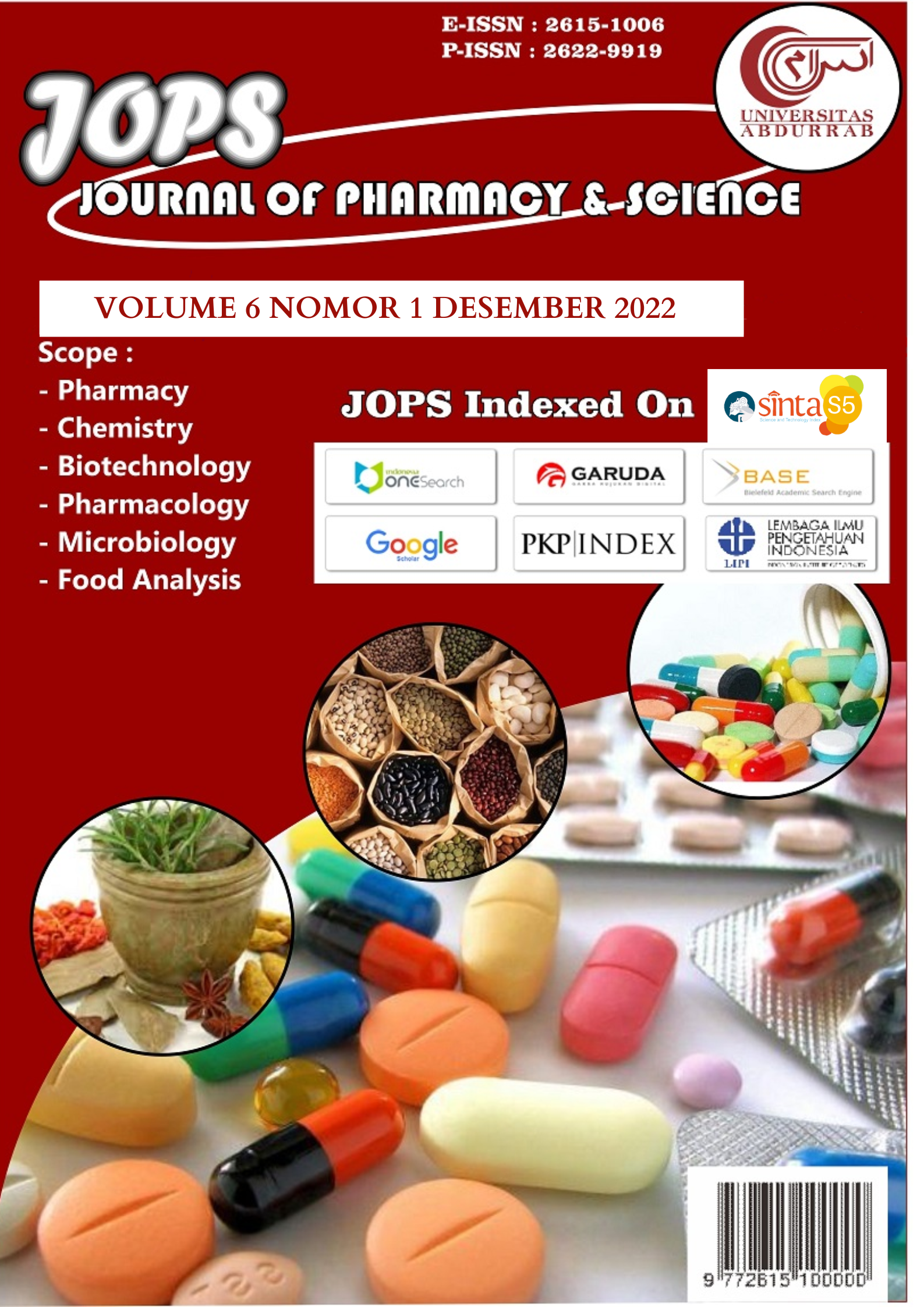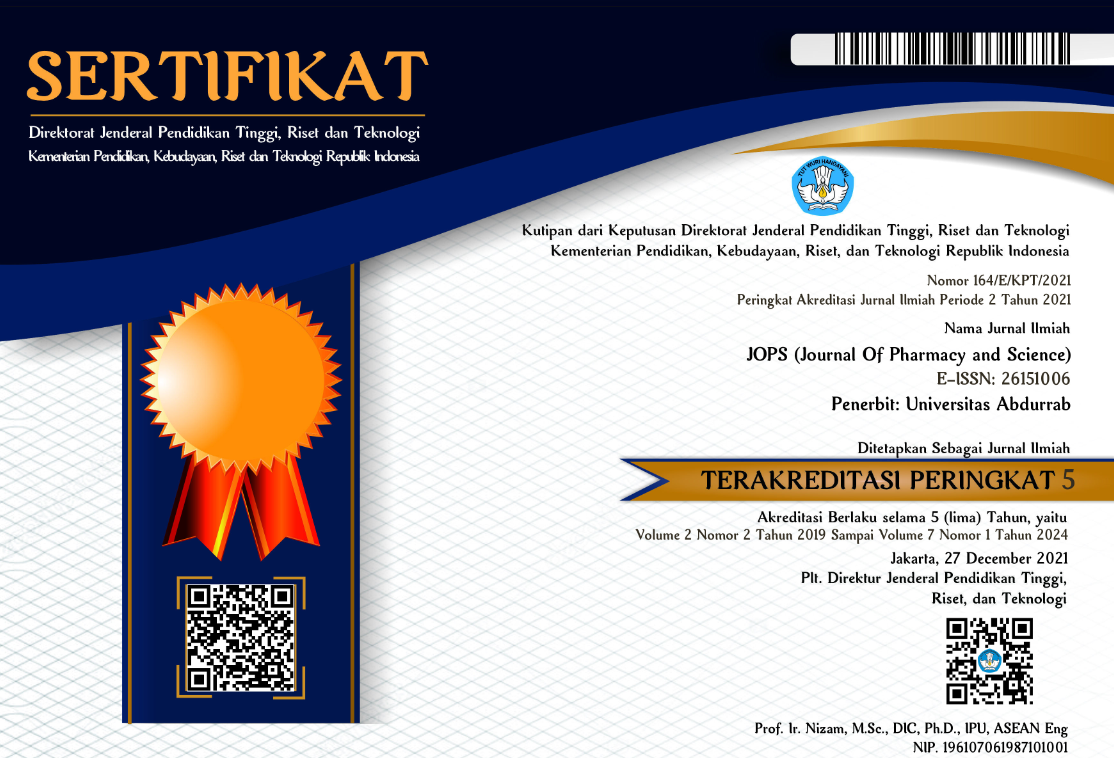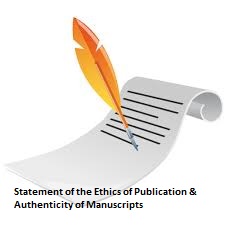Profile of the Use of Type II Antidiabetic Drugs in RSUD Dr. Husni Thamrin Natal Medan, North Sumatra
Abstract
The pancreas does not produce enough insulin or the body cannot use the insulin it produces effectively. Insulin is a hormone that regulates the balance of blood sugar levels. (hyperglycemia). This research was conducted with a non-experimental descriptive method with a cross-sectional design that was carried out every month. Sampling was carried out in the internal medicine section of RSUD by Dr. Husni Thamrin Natal. Samples were taken retrospectively every month using secondary data, namely medical records of patients using oral antidiabetics (drugs) in the period from January to June 2019. The data obtained was presented in the form of table proportions and graphs. The results showed that the largest percentage of use of antidiabetic drugs was male, as many as 67 people (57.26%), over 50 years old, as many as 97 people (82.91%), and the type of work was self-employed for as many as 47 people (40, 17%). The most widely used antidiabetic drug groups are the biguanide groups (75.17%), the combination type of drug with a combination of metformin and glimepiride (93.33%), and the frequency of use of the drug metformin (74.15%). Based on the results of the study, it can be concluded that the highest prevalence is in the male sex, and the average age is over 50 years. The pattern of prescribing antidiabetic drugs based on the most widely used drug class is the biguanide group, which is a combination of metformin and glimepiride types of drugs, and the frequency of drug use is metformin.
References
International Diabetes Federation. 2015. IDF Diabetes Atlas Seventh Edition IDF;.IDF Atlas
Kelly, S. D., Neary, S. L. 2020. Ominous Octet and Other Scary Diabetes Stories: The Overview of Pathophysiology of Type 2 Diabetes Mellitus. Physician Assistant Clinics. 5(2). 121-133.
Kementerian Kesehatan RI. 2010. Riset Kesehatan Dasar. Jakarta: Badan Penelitian dan Pengembangan Kesehatan Kementerian RI
Kementerian Kesehatan RI. 2018. Riset Kesehatan Dasar (Riskesdas). Jakarta: Badan Penelitian dan Pengembangan Kesehatan Kementerian RI
Shah, M., Vella, A. 2016. Understanding Diabetes Mellitus: Pathophysiology. In M. Kurian, B. M. Wolfe, & S. Ikramuddin (Eds.), Metabolic Syndrome and Diabetes: Medical and Surgical Management. Springer New York. (pp. 33-45).
Tan, H.T., dan Rahardja, K. 2002. Obat-Obat Penting: Khasiat, Penggunaan, dan Efek-Efek Sampingnya. Edisi Kelima. Cetakan Kedua. Jakarta: PT. Elex Media Komputindo
Tarwoto, Wartono, Taufiq I. 2012. Keperawatan Medikal Bedah Gangguan Sistem Endokrin. Jakarta: CV Trans Info Media
Waspadji, S., dkk. 2009. Pedoman Diet Diabetes Melitus. Jakarta: FKUI.
Word Health Organization. 2015. Diabetic facts sheet.
Zaccardi, F., Webb, D. R., Yates, T., Davies, M. J. 2016. Pathophysiology of Type 1 and Type 2 Diabetes Mellitus: A 90-year Perspective. Postgraduate Medical Journal. 92(1084): 63
Copyright (c) 2022 JOPS (Journal Of Pharmacy and Science)

This work is licensed under a Creative Commons Attribution-NonCommercial-ShareAlike 4.0 International License.
1. Copyright of all journal manuscripts is held by the JOPS (Journal Of Pharmacy and Science)
2. Formal legal provisions to access digital articles of electronic journal are subject to the provision of the Creative Commons Attribution-ShareAlike license (CC BY-NC-SA), which means that JOPS (Journal Of Pharmacy and Science) is rightful to keep, transfer media/format, manage in the form of databases, maintain, and publish articles.
3. Published manuscripts both printed and electronic are open access for educational, research, and library purposes. Additiponally, the editorial board is not responsible for any violations of copyright law.
licensed under a Creative Commons Attribution-ShareAlike 4.0 International License.
 PDF (Bahasa Indonesia)
PDF (Bahasa Indonesia)
 Abstract views: 236
Abstract views: 236
 downloads: 196
downloads: 196

 :
:

1.png)








